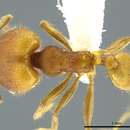tr
kırıntılardaki isimler


This is a very abundant species in the low arboreal stratum of primary wet forest understory throughout Costa Rica. Nests may be found in almost any kind of cavity or sheltered space, and they may augment their nest space by building galleries and tunnels with carton or earthen construction. Nests have been observed in cavities in live stems of Cephaelis (Rubiaceae) and Pausandra trianae (Euphorbiaceae), bracts of Ischnosiphon (Marantaceae), clasping petiole bases of Araceae, and the bulbous leaf bases of Tillandsia bulbosa. It is a common opportunistic inhabitant of myrmecophytes such as saplings of Cecropia, portions of myrmecophytic Ocotea trees abandoned by Myrmelachista, and myrmecophytic Piper species. In every Costa Rican population of myrmecophytic melastomes (those with petiolar or laminar pouches; Conostegia setosa, Clidemia sp., Tococa sp.) that has been observed (Corcovado, La Selva, Tortuguero), this species has been the most abundant inhabitant. This was the dominant ant in Leanne Tennant's study of Conostegia setosa at La Selva (Tennant 1994). The species also nests in dead sticks and branches on or above the forest floor, and under bark flaps on tree trunks. When nests are in myrmecophytic melastomes, carton galleries may occur on the outside, connecting pouches and extending down the stem to the ground. Colonies appear to be polydomous. Workers are generalist foragers, and may be taken at baits or in samples of sifted leaf litter.
Costa Rica, Guatemala. Costa Rica: wet forest areas throughout the country to 1000m elevation (Corcovado, Penas Blancas, La Selva, Tortuguero, Hitoy Cerere).
Taxonomic history
Forel, 1901m PDF: 78 (q.).Junior synonym of Pheidole bilimeki: Wilson, 2003a: 378.Revived from synonymy: Longino & Cox, 2009 PDF: 40.Nec Smith, 1933 PDF, Naves, 1985 PDF, Boer & Vierbergen, 2008: Sarnat et al., 2015 10.3897/zookeys.543.6050 PDF: 32.Pheidole anastasii is een mierensoort uit de onderfamilie van de Myrmicinae.[1][2] De wetenschappelijke naam van de soort is voor het eerst geldig gepubliceerd in 1896 door Emery.
Bronnen, noten en/of referenties